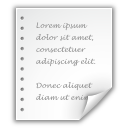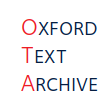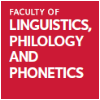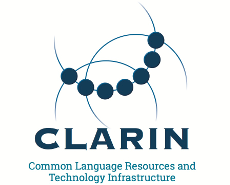A guide to computer applications in the humanities / compiled by Susan Hockey
| dc.contributor | Hockey, Susan Centre for E-Texts in the Humanities |
| dc.contributor.author | Hockey, Susan M. |
| dc.date.accessioned | 2018-07-27 |
| dc.date.accessioned | 2022-08-21T15:59:45Z |
| dc.date.available | 2022-08-21T15:59:45Z |
| dc.date.created | 1980 |
| dc.date.issued | 1981-01-01 |
| dc.identifier | ota:0156 |
| dc.identifier.uri | http://hdl.handle.net/20.500.14106/0156 |
| dc.description.abstract | [ca. 1981] In English Title from title page of source text |
| dc.format.extent | Text data between 512 KB and 1 MB Contains markup characters |
| dc.format.medium | Digital bitstream |
| dc.language | English |
| dc.language.iso | eng |
| dc.publisher | University of Oxford |
| dc.relation.ispartof | Oxford Text Archive Legacy Collection |
| dc.rights | Although this resource has been deposited with us, it is not currently available for re-use by others. |
| dc.rights.uri | https://hdl.handle.net/20.500.14106/licence-ota |
| dc.rights.label | ACA |
| dc.subject.lcsh | Primers -- England -- 20th century |
| dc.subject.other | Primers |
| dc.title | A guide to computer applications in the humanities / compiled by Susan Hockey |
| dc.type | Text |
| hidden | hidden |
| has.files | yes |
| branding | Oxford Text Archive |
| files.size | 561195 |
| files.count | 2 |
| otaterms.date.range | 1900-1999 |
Files for this item
Download all local files for this item (548.04 KB)

- Name
- computing-0156.txt
- Size
- 359.53 KB
- Format
- Text file
- Description
- Version of the work in plain text format
<C Preface > <P 7> In recent years there has been considerable growth in the use of computers in arts research, but as yet there exists no introductory guide to the subject. This book is intended to fill such a need. It is based on a series of lectures given in Oxford, lectures which are mostly attended by those doing research in arts subjects. Chapters One and Two introduce many of the mysteries of the computer and may be skipped by those who are already familiar with the machine. The major areas of computer applications in literary research are covered in subsequent chapters, together with a general view of indexing, cataloguing and information retrievae for historical and bibliographical data. For those whose interest is awakened, the final chapter gives a brief guide on how to start a computer project in the academic world. The examples of computer printout were produced on the <2ICL>2 1906A computer at Oxford University Computing Service, whose help I acknowledge. Kind permission . . .

- Name
- pseudohockey-0156.txt
- Size
- 188.51 KB
- Format
- Text file
- Description
- Version of the work in plain text format
NUMBER OF RELEVANT REFERENCES RETRIEVED
NUMBER OF RELEVANT REFERENCES RETRIEVED
TOTAL NUMBER OF REFERENCES RETRIEVED X100
TOTAL NUMBER OF RELEVANT REFERENCES IN DATABASE
NUMBER OF CELLS. THE NUMBER OF BITS PER CELL IS ALWAYS CONSTANT ON ONE
THERE ARE A NUMBER OF DIFFERENT KINDS OF COMPUTERS. EACH COMPUTER
3. <C 3> <P 41>
("SPECIAL CHARACTERS') MAY HAVE DIFFERENT CODES. IF INFORMATION IS TO BE
----------
----------
"AND' OCCURS IN A TEXT. THEY WOULD BE SOMETHING LIKE:
"ERROR' APPEARING VERY FREQUENTLY DURING YOUR FIRST FEW WEEKS OF COMPUTING.
"EXIT'. IT SEEMS MOST SENSIBLE TO OMIT THEM FROM THE CONCORDANCE BY
"GREAT-GRANDFATHER' IS DISCARDED, LEAVING ONLY THE PREVIOUS TWO VERSIONS TO
"OUTPUT' SOON BECOME COMMONPLACE TO HIM. IF HE MOVES TO WORK ON ANOTHER
"OWNED' RECORDS ARE STORED ON DISC. THE RECORDS CAN BE INTERRELATED IN MANY
"STATISTICAL ANALYSIS OF DIALECTAL BOUNDARIES', "PHONOLOGICAL PATTERNING IN
A <1 . . .




